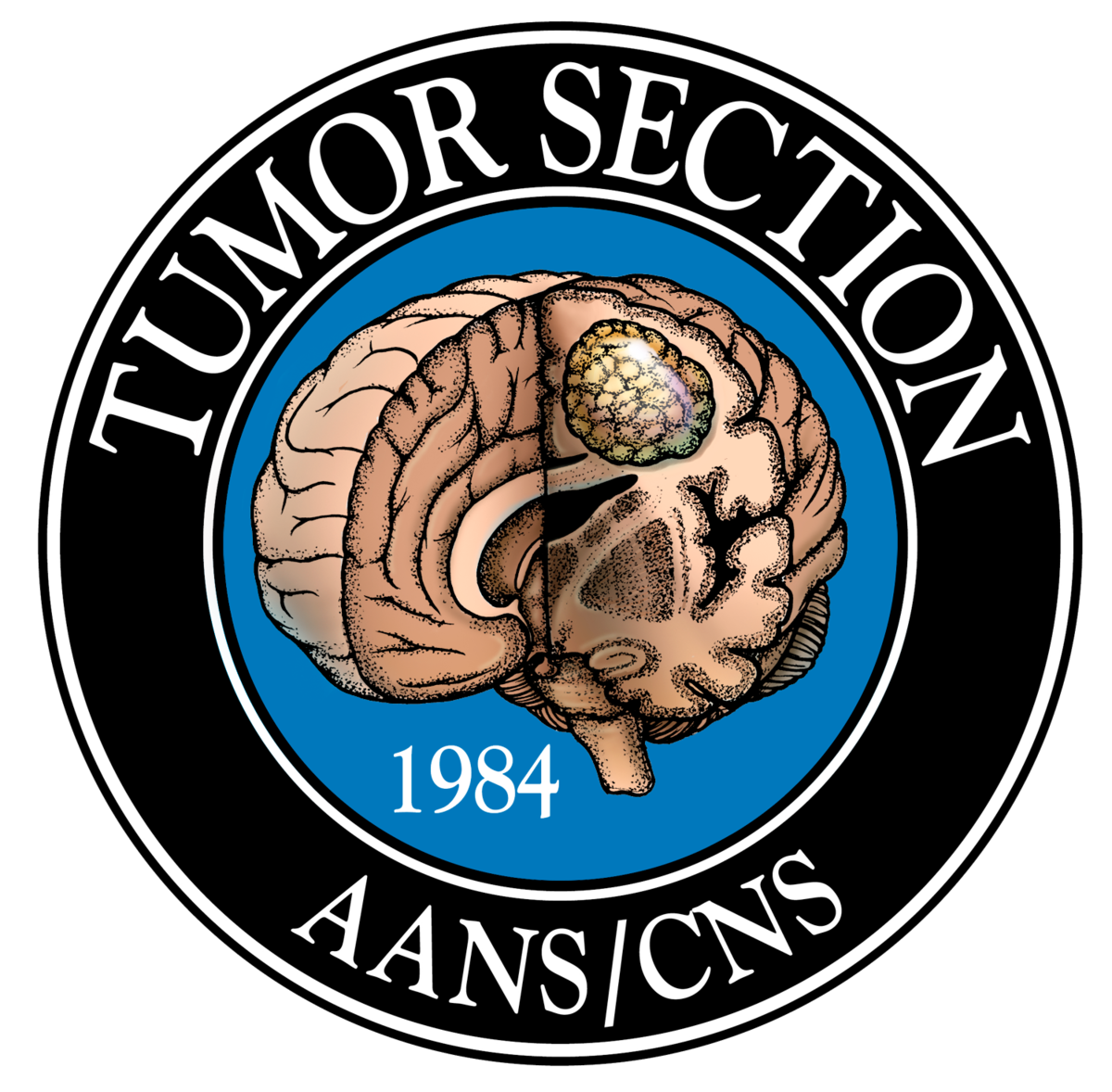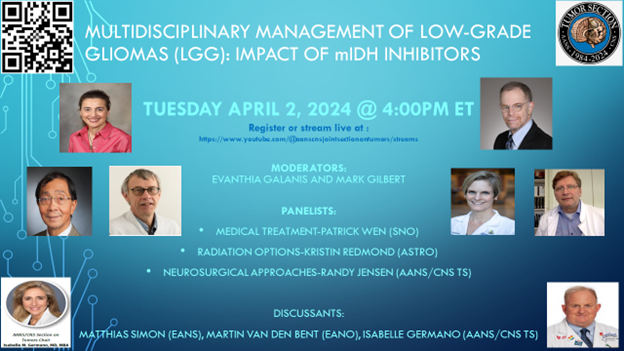Co-Chairs: Eva Galanis, MD, Mark Gilbert, MD
The Medical Neuro-Oncology Subcommittee appreciates the opportunity to help foster interdisciplinary activities by promoting educational opportunities and dialogue that focus on areas of interest for both neurosurgical and medical neuro-oncologists. In this context, we feel that two important advances warrant particular attention as they will impact to global approach to patient management across the disease trajectory. These topics were also featured prominently in the recent Society of Neuro-Oncology meeting (Vancouver BC, November 2023).
One important area that warrants attention and further discussion is the recently reported results of a randomized, placebo-controlled, double blinded phase 3 trial testing vorasidenib, an IDH inhibitor, in patients with confirmed IDH mutated low grade glioma not in immediate need for other interventions such as chemotherapy or radiation therapy (Mellinghoff et al, NEJM 2023). There was a marked improvement in both progression free survival, as well as delay of introduction of next treatment in the group receiving vorasidenib. While the results are quite clear, the implications for use after likely regulatory approval warrant further discussion. Similarly, these results raise questions about timing of initial surgery in patients with asymptomatic or minimally symptomatic non-enhancing brain lesions as well as the timing of introduction of the current standards of care of radiation and chemotherapy. Please join us!
See recording at: https://www.youtube.com/@AANSCNSJointsectiononTumors
Second, there has been a marked expansion of the use of molecular testing to diagnose and define primary brain and spinal cord tumors. This dramatic shift in diagnostic criteria is very evident in the 2021 WHO diagnostic guidelines. Some diseases such as oligodendroglioma mandate testing before a diagnosis is made. Other tumors, such as ependymoma, rely on molecular testing to enable subclassification into one of now 10 subgroups. These subgroup designations are important in both prognosis and management. Innovative technologies, such as the use of methylation testing, have transformed neuropathology. Currently, nearly 90% of tumors can be accurately diagnosed using this method, which is increasingly becoming available. Importantly, as methylation data is continuing to be collected, tumors that were previously unclassified are being compiled with others with similar profile leading to new diagnoses such as the high-grade glioma with pleomorphic and pseudopapillary features (HPAP) and high-grade astrocytoma with piloid features (HGAP). Other testing that is being done primarily as investigative such as RNA sequencing and whole exome or whole genome sequencing are likely to become routine as the costs reduce and the informatics more readily accomplished. The importance of accurate diagnosis spans from clinical trial inclusion criteria to optimizing individual patient care. In addition to awareness, other challenges may include widespread availability of the technology and reimbursement.



